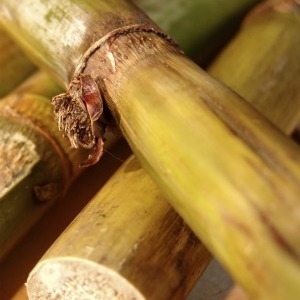Ceres begins field evaluations of its biotech traits in sugarcane

June 13, 2014
BY Ceres Inc.
Ceres Inc., an agricultural biotechnology and seed company, will evaluate a number of its biotech traits in sugarcane in South America. Plantings were recently completed and preliminary performance observations will be available by the end of the year. Ceres expects to receive sugar yield results in the second half of 2015 when the first growing cycle is completed. Sugarcane provides an additional out-licensing opportunity for traits that the company is developing for its own use in sorghum and other energy crops.
The pilot-scale field evaluations include a number of Ceres’ leading traits for high sugar and drought tolerance. According to the company, these first field evaluations in sugarcane are designed to measure the performance of the traits in leading commercial varieties, with a goal of advancing the best plants for broader evaluation. Evaluations will be managed by a South American sugarcane developer.
Roger Pennell, PhD, vice president of trait development for Ceres, said that the company’s biotech traits could provide significant benefits to sugarcane production. Higher sugar yields and greater resilience to drought and other stress conditions would not only increase output, but also lower production costs.
Advertisement
“If our greenhouse results are confirmed in the field, plants with Ceres’ traits could allow growers to leapfrog ahead of the incremental gains that have been made through plant breeding alone,” said Pennell. “Plant breeding is particularly cumbersome in sugarcane. The plants have long growing cycles and common breeding processes are difficult to implement due to limitations in how and when sugarcane plants produce pollen and flowers.”
Walter Nelson, Ceres vice president of product development, said that the company intends to work with mills and growers in South America and other sugarcane production areas once it has the field data it needs to determine more definitively the commercial value of these traits in sugarcane. Commercialization timelines will depend primarily on trial results and the regulatory review process in various markets.
“We intend our field evaluations to be a proving ground for a broader rollout of these traits in sugarcane varieties developed for multiple areas,” said Nelson.
Advertisement
Ceres has previously out-licensed its genetic technology and genes to other seed companies for use in rice, corn, soybean and sugar beets, among other crops. Ceres is focused on genes that have shown large, clear increases in performance, and whose benefits are maintained across multiple species. The company’s field evaluations of its biotech traits in multiple crops have largely confirmed previous results obtained in greenhouse and laboratory settings.
According to the U.N. Food and Agriculture Organization, 62 million acres (25 million hectares) of sugarcane were harvested worldwide in 2012, including 27 million acres (11 million hectares) in South America.
Related Stories
The USDA’s National Agricultural Statistics Service on June 30 released its annual Acreage report, estimating that 83.4 million acres of soybeans have been planted in the U.S. this year, down 4% when compared to 2024.
SAF Magazine and the Commercial Aviation Alternative Fuels Initiative announced the preliminary agenda for the North American SAF Conference and Expo, being held Sept. 22-24 at the Minneapolis Convention Center in Minneapolis, Minnesota.
Saipem has been awarded an EPC contract by Enilive for the expansion of the company’s biorefinery in Porto Marghera, near Venice. The project will boost total nameplate capacity and enable the production of SAF.
Global digital shipbuilder Incat Crowther announced on June 11 the company has been commissioned by Los Angeles operator Catalina Express to design a new low-emission, renewable diesel-powered passenger ferry.
Scientists at ORNL have developed a first-ever method of detecting ribonucleic acid, or RNA, inside plant cells using a technique that results in a visible fluorescent signal. The technology could help develop hardier bioenergy and food crops.
Upcoming Events










